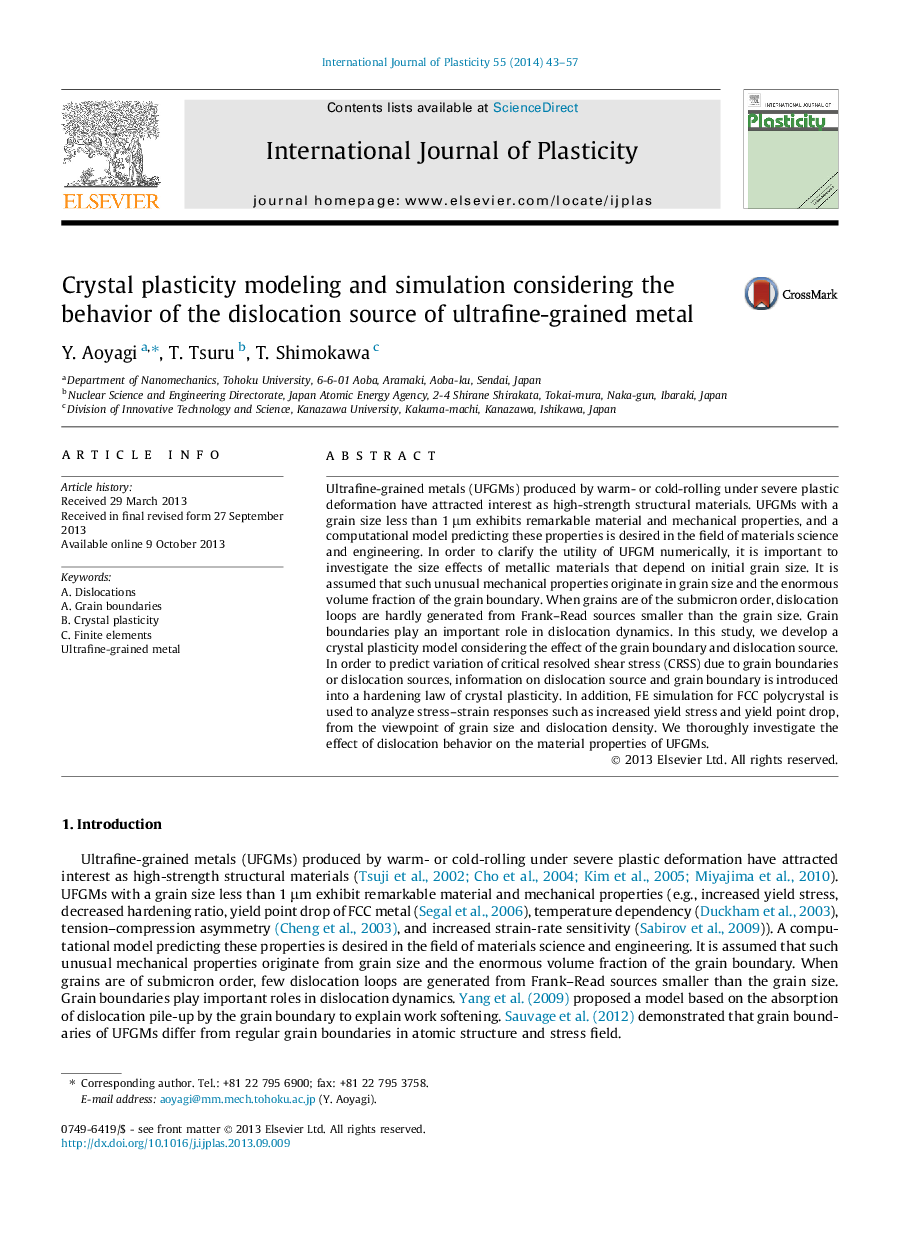| Article ID | Journal | Published Year | Pages | File Type |
|---|---|---|---|---|
| 786803 | International Journal of Plasticity | 2014 | 15 Pages |
•We develop a crystal plasticity model considering the effect of dislocation source.•Dislocation behavior can be reproduced by the crystal plasticity model.•Differences in dislocation behavior cause discontinuous yielding and a yield point drop.•The yield stress is affected by the size of the dislocation source.
Ultrafine-grained metals (UFGMs) produced by warm- or cold-rolling under severe plastic deformation have attracted interest as high-strength structural materials. UFGMs with a grain size less than 1 μm exhibits remarkable material and mechanical properties, and a computational model predicting these properties is desired in the field of materials science and engineering. In order to clarify the utility of UFGM numerically, it is important to investigate the size effects of metallic materials that depend on initial grain size. It is assumed that such unusual mechanical properties originate in grain size and the enormous volume fraction of the grain boundary. When grains are of the submicron order, dislocation loops are hardly generated from Frank–Read sources smaller than the grain size. Grain boundaries play an important role in dislocation dynamics. In this study, we develop a crystal plasticity model considering the effect of the grain boundary and dislocation source. In order to predict variation of critical resolved shear stress (CRSS) due to grain boundaries or dislocation sources, information on dislocation source and grain boundary is introduced into a hardening law of crystal plasticity. In addition, FE simulation for FCC polycrystal is used to analyze stress–strain responses such as increased yield stress and yield point drop, from the viewpoint of grain size and dislocation density. We thoroughly investigate the effect of dislocation behavior on the material properties of UFGMs.
